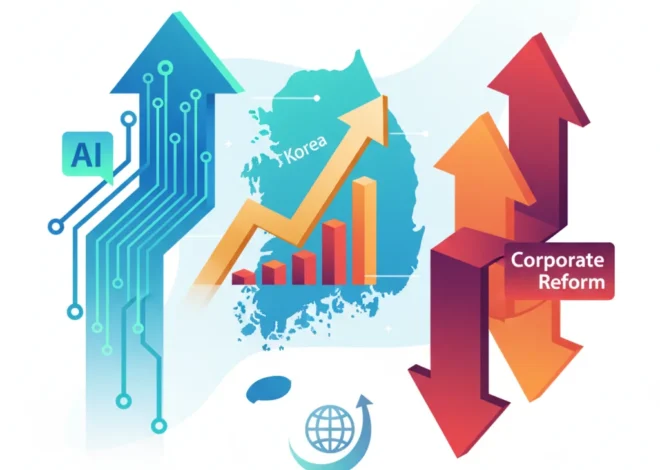
The Unseen Liability: What a Humiliating Flight Denial Teaches Investors About the Multi-Billion Dollar Cost of Social Failure
It was a moment of profound and public humiliation. Mark Mardell, a veteran journalist and former BBC editor, stood at an airport gate, ready to board a flight. But he was stopped. The reason? The visible symptoms of his Parkinson’s disease were misinterpreted by airline staff as a potential risk. Despite his explanations, he was denied boarding, an experience he later described as deeply “humiliating.” This incident, reported by the BBC, is more than just a heartbreaking travel story. For investors, finance professionals, and business leaders, it is a stark and resonant case study in a rapidly escalating area of corporate risk: the “S” in ESG (Environmental, Social, and Governance).
In a world increasingly dominated by quantitative analysis, algorithmic trading, and data-driven decisions, the Mardell incident serves as a critical reminder of the immense financial liability hidden within human interaction and corporate culture. A single employee’s poor judgment, born from inadequate training and flawed policy, can ignite a firestorm of negative press, alienate a vast customer segment, and inflict tangible damage on a company’s brand equity and stock market valuation. This isn’t a “soft” issue; it’s a hard-nosed financial reality. Understanding the deep connection between social responsibility and balance sheet stability is no longer optional—it is fundamental to modern investing and sustainable economic growth.
Deconstructing the Failure: A Lesson in Operational and Reputational Risk
At its core, the decision to prevent Mark Mardell from flying was a catastrophic failure of operational risk management. Airline staff, tasked with ensuring passenger safety, made a subjective assessment based on appearance rather than objective criteria or a respectful dialogue. This single point of failure reveals a cascade of underlying weaknesses that should be a red flag for any investor scrutinizing a company’s operational health.
This scenario is not unique to the airline industry. It has direct parallels across the financial sector:
- In Banking: It’s the loan officer who, influenced by unconscious bias, denies a mortgage to a qualified applicant from a minority background, exposing the bank to legal action and community backlash.
- In Fintech: It’s the financial technology app designed without accessibility features, effectively locking out millions of potential users with visual or motor impairments and ceding market share to more inclusive competitors.
- In Trading: It’s the high-pressure trading floor culture that discourages speaking up about mental health, leading to burnout, costly errors, and an inability to retain top talent.
In each case, a failure in social awareness and policy implementation creates a direct financial risk. These are not edge cases; they are systemic vulnerabilities. Investors who only look at price-to-earnings ratios or debt-to-equity metrics are missing a crucial piece of the puzzle. The true resilience of an enterprise is often revealed in how it handles the most human of its responsibilities.
Below is a comparative analysis of how these social-operational risks manifest in different sectors.
| Risk Factor | Manifestation in Aviation (Mardell Case) | Parallel in Financial Services |
|---|---|---|
| Inadequate Staff Training | Inability to differentiate a medical condition from intoxication or other risks, leading to discrimination. | Poor training on anti-money laundering (AML) protocols or unconscious bias, resulting in regulatory fines or discriminatory lending practices. |
| Flawed Corporate Policy | Policies that empower frontline staff to make high-stakes decisions without clear, inclusive guidelines or escalation paths. | Rigid, algorithm-driven credit scoring models that unfairly penalize non-traditional workers, shrinking the potential customer base. |
| Reputational Damage | Global negative headlines, social media backlash, and erosion of trust among customers, particularly those with disabilities. | Public exposure of discriminatory practices or a data breach, leading to customer exodus and a plummeting stock market price. |
| Direct Financial Cost | Potential lawsuits, regulatory fines, and the cost of public relations crisis management. | Class-action lawsuits, hefty regulatory penalties from bodies like the SEC or FCA, and lost revenue from alienated customers. |
Beyond the Balance Sheet: What a Local Food Pantry Reveals About the Future of Finance and Investing
The ESG Imperative: Quantifying the “S” in a Multi-Trillion Dollar Economy
For years, the ‘Social’ component of ESG investing has been considered the most difficult to quantify. Unlike carbon emissions (Environmental) or board diversity (Governance), social metrics often seemed nebulous. The Mardell incident powerfully refutes this notion. The financial impact of social failure is becoming increasingly measurable.
Consider the “Purple Pound”—the consumer spending power of disabled people and their families. In the UK alone, this is estimated to be worth £274 billion a year (source). When a company fails a customer with a disability so publicly, it doesn’t just lose one person’s business. It sends a powerful signal to this entire, economically significant demographic that their patronage is not valued. The ripple effect can be devastating, impacting everything from quarterly earnings to long-term brand loyalty.
This is where modern financial analysis must evolve. Investors can no longer afford to view a company’s Diversity, Equity, and Inclusion (DEI) report as corporate fluff. It should be read as a lead indicator of operational competence and market awareness. A company that invests in comprehensive accessibility training is not just being ethical; it is engaging in sophisticated risk mitigation and market expansion. Conversely, a company that neglects it is signaling a blind spot that could easily translate into future financial shocks. The global economy is watching, and capital is increasingly flowing towards companies that can prove their social resilience.
The Double-Edged Sword of Financial Technology
It is tempting to look at incidents of human error and conclude that technology is the ultimate solution. Indeed, financial technology (fintech) and other digital tools offer powerful ways to mitigate some of these risks. In banking, AI-driven tools can help remove human bias from initial loan application screenings. In travel, digital health passports or secure identity platforms—perhaps one day leveraging the decentralized trust of blockchain—could provide objective information to airline staff, preventing subjective and discriminatory judgments.
However, technology is not a panacea. It can also create new, more insidious forms of exclusion. An over-reliance on automation without human oversight can lead to a “computer says no” culture that is just as rigid and humiliating as the one Mr. Mardell faced. Consider:
- A fintech app’s facial recognition security that fails for users with facial paralysis.
- An automated trading algorithm that misinterprets a news sentiment analysis related to a disability advocacy group, triggering a flash crash in a related company’s stock.
- A digital banking platform that is incompatible with screen-reading software used by the visually impaired.
The challenge for the next decade of financial technology is to design systems that are not only efficient and secure but also inherently inclusive and adaptable. This requires moving beyond a compliance-based mindset to one of “universal design,” where accessibility is a core architectural principle, not an afterthought. The most successful fintech innovations will be those that use technology to empower human judgment, not replace it entirely.
Beyond the Slice: A Financial Autopsy of Pizza Hut's UK Restructuring
From Boardroom Policy to Frontline Reality: The Economics of Empathy
Ultimately, this incident highlights the critical gap between boardroom policy and frontline reality. An airline, a bank, or an investment firm can have a beautifully written, legally vetted policy on diversity and inclusion. But that policy is worthless if it is not embodied in the training, culture, and daily actions of every single employee.
Closing this gap is not an expense; it is an investment with a clear return. The economics are straightforward. A company can either invest proactively in robust, scenario-based training for its staff or it can pay reactively in the form of legal settlements, regulatory fines, and the exorbitant cost of rebuilding a shattered reputation. One builds long-term value; the other is a frantic exercise in damage control.
Let’s analyze the cost-benefit of this proactive investment.
| Investment (Cost) | Return on Investment (Benefit) |
|---|---|
| Comprehensive Employee Training (e.g., disability awareness, unconscious bias) |
Risk Mitigation: Reduced likelihood of discriminatory incidents, lawsuits, and regulatory penalties. |
| Accessible Technology & Infrastructure (e.g., accessible websites, physical ramps) |
Market Expansion: Access to a wider customer base (e.g., the “Purple Pound”) and a more diverse talent pool. |
| Developing Inclusive Policies (e.g., clear guidelines for assisting customers) |
Enhanced Brand Reputation: Increased customer loyalty, positive press, and a higher ESG rating, attracting socially conscious investors. |
| Strong Governance & Oversight (e.g., regular audits of inclusion practices) |
Operational Excellence: A more resilient and adaptable organization, better equipped to handle the complexities of a diverse global economy. |
The story of Mark Mardell is a powerful allegory for the modern economy. In an interconnected world, a failure of empathy on the front lines can create shockwaves that reach the highest echelons of the stock market. For business leaders, the mandate is to invest in the human infrastructure of their companies with the same rigor they apply to their financial and technological assets. For investors, the takeaway is to look beyond the numbers and scrutinize the culture. The most enduring enterprises of the 21st century will be those that understand that how you treat one person is how you treat everyone—and that in the final accounting, dignity and diligence are two sides of the same coin.
The humiliation felt by one man at an airport gate is a signal. It’s a signal of operational weakness, a signal of untapped market potential, and a signal of impending financial risk. The wisest players in the market will be the ones who hear it loud and clear.

